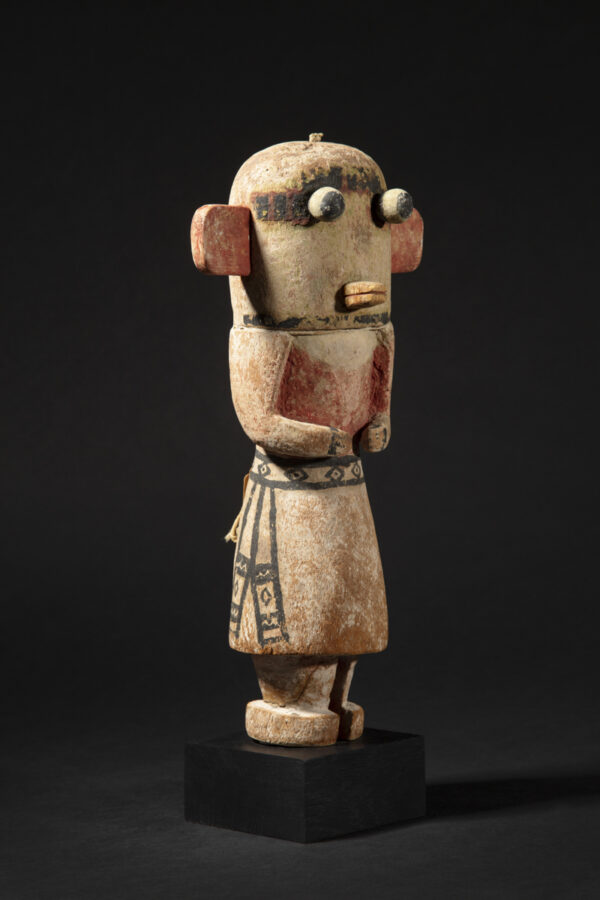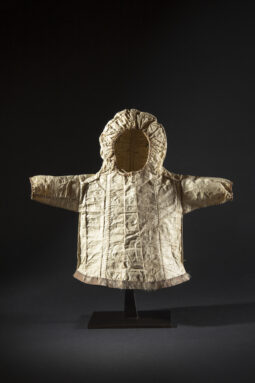North America | Arizona
Katsina Doll
Arizona
Holi Katsina – Holi Katsina doll
Hopi, Arizona, USA
Circa 1900-1910
Carved wood (cottonwood), pigments
Height: 11 ½ in. – 29 cm
Provenance:
Ex collection American Broadcasting Company (ABC), New York, NY
Inventory ABC N-Y Art A0226
Ex collection Walt Disney Co., Burbank, CA, acquired by corporate merger in 1995
Ex private collection, Los Angeles, CA
Sold
Katsina dolls (or katsinam) represent spirits or gods from the pantheon of the Pueblo peoples in the American Southwest. Given to children, Katsina dolls constituted a teaching tool allowing them to familiarize themselves with the spiritual world and perpetuating knowledge of the founding myths on which their society was based.
Ho'oli, also known as Susukholi or simply Holi, takes its name from the word "holi" that the dancer who embodies this Katsina sings during his ritual performances.
Holi Katsinam are messengers of the rain gods. They can be seen during kiva dances and weekly dances on the plaza. The black line motif across their faces is said to represent lightning.
According to the Hopi people of Third Mesa, the first appearance of Holi is believed to have occurred in 1904 in the village of Oraibi.
A handwritten label on the back of the figure indicates that this doll was acquired in the Hopi village of Polacca, located at the foot of the First Mesa, in 1918. It is also noted that it was obtained in the village of Walpi.
Ho'oli, also known as Susukholi or simply Holi, takes its name from the word "holi" that the dancer who embodies this Katsina sings during his ritual performances.
Holi Katsinam are messengers of the rain gods. They can be seen during kiva dances and weekly dances on the plaza. The black line motif across their faces is said to represent lightning.
According to the Hopi people of Third Mesa, the first appearance of Holi is believed to have occurred in 1904 in the village of Oraibi.
A handwritten label on the back of the figure indicates that this doll was acquired in the Hopi village of Polacca, located at the foot of the First Mesa, in 1918. It is also noted that it was obtained in the village of Walpi.
Explore the entire collection






























































